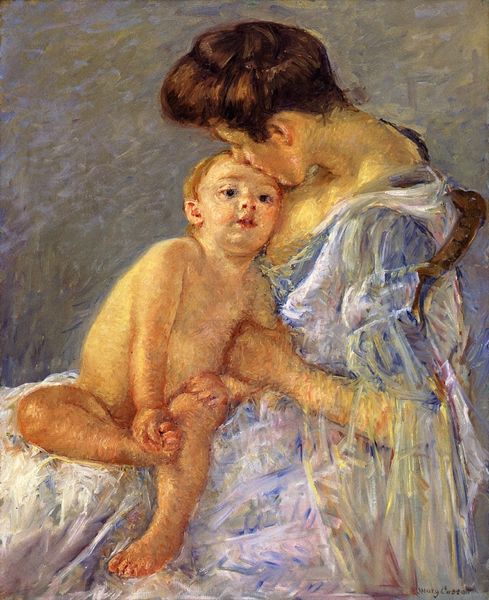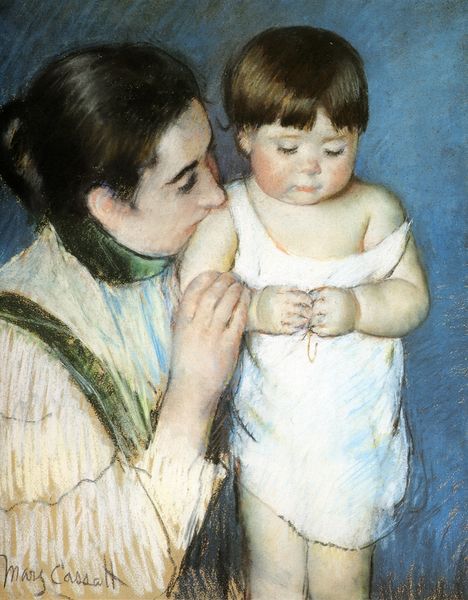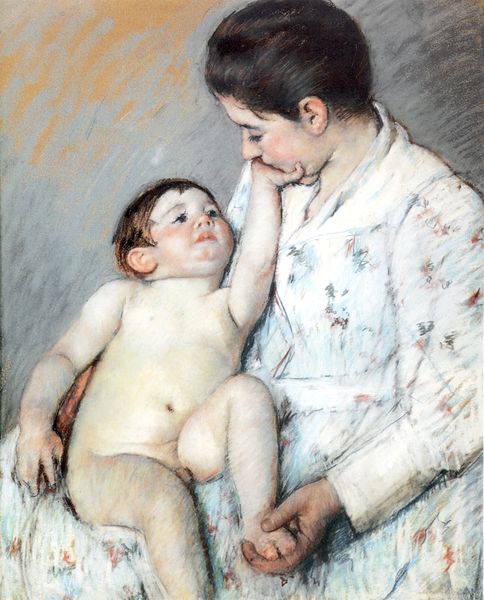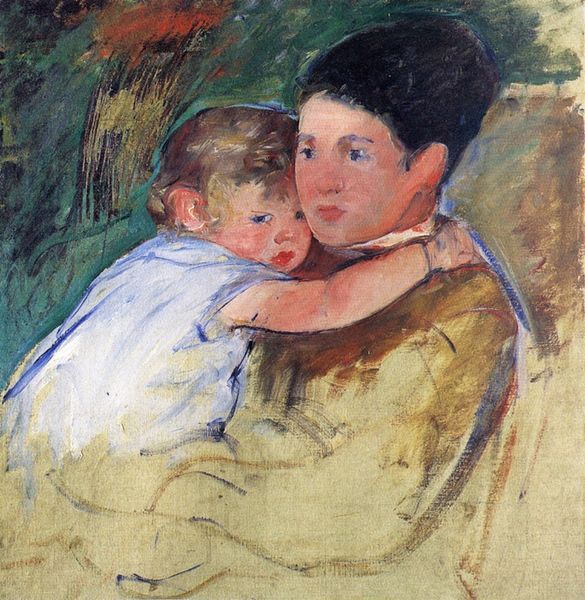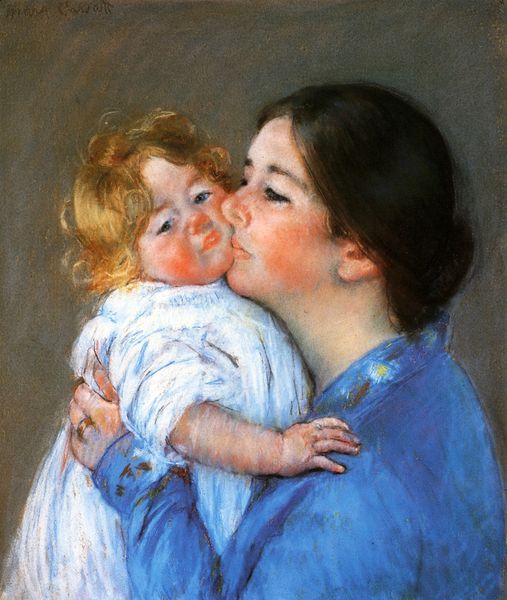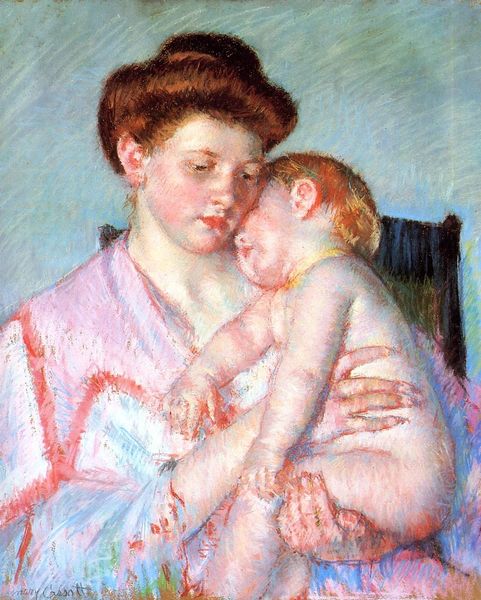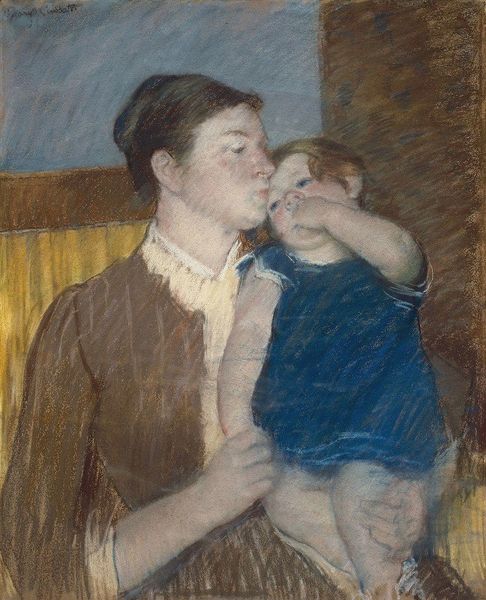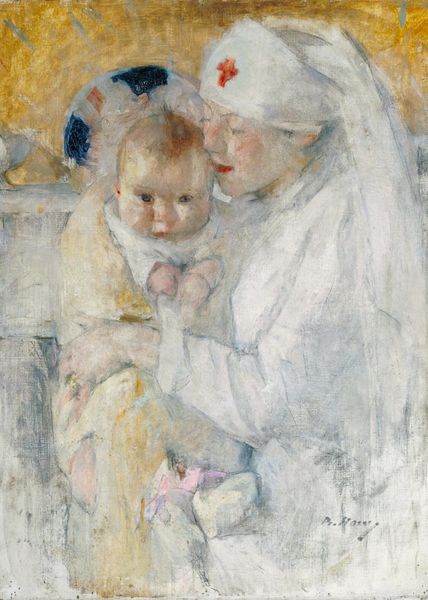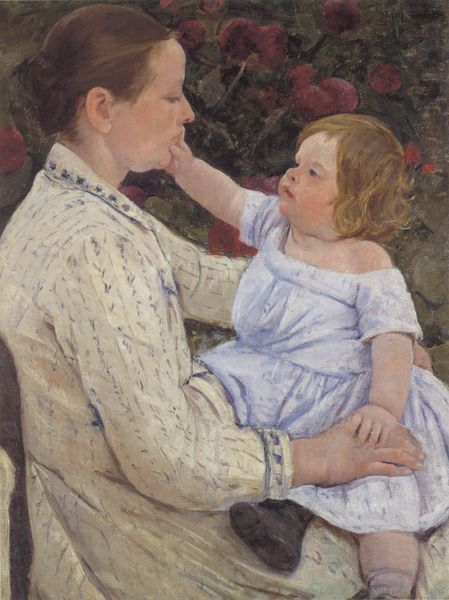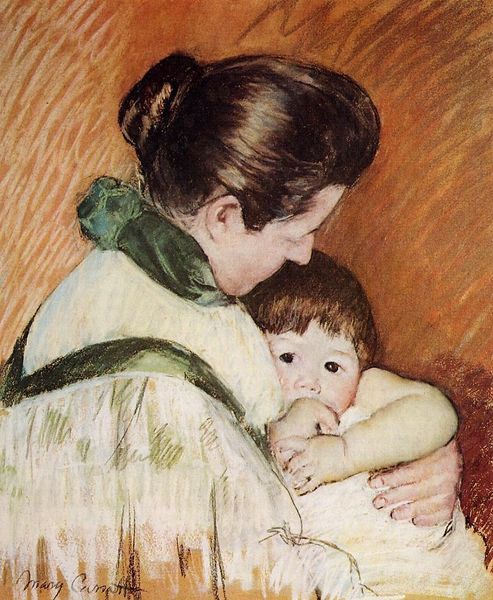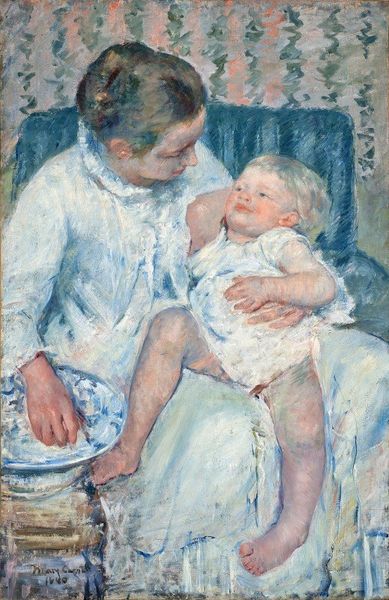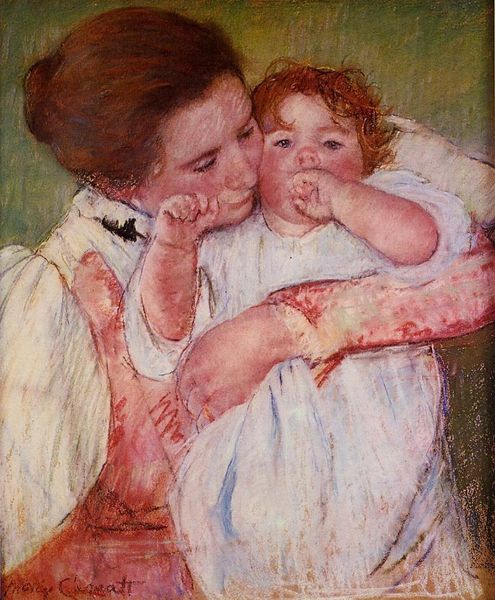
painting, oil-paint
#
portrait
#
mother
#
painting
#
impressionism
#
oil-paint
#
figuration
#
oil painting
#
child
#
portrait art
Dimensions: 59.69 x 73.66 cm
Copyright: Public domain
Curator: Here we have Mary Cassatt's "Mother and Child," completed in 1889. This painting offers a poignant view into domestic life during that period. Editor: My initial impression is one of profound tenderness. The muted color palette contributes to a sense of intimacy. The blurred Impressionistic brushstrokes somehow heighten the emotional connection, focusing our gaze on the figures' embrace rather than minute details. Curator: Cassatt was unique as a female artist among the Impressionists. The art world, and specifically the male dominated Impressionists circle in Paris, provided unique opportunities for Cassatt as a woman artist although society didn't readily make those pathways available for women to study art and have a successful career. Editor: Absolutely. This artwork transcends its simple representation of a mother and child, operating almost as a quiet manifesto. By focusing on the private, interior lives of women, she challenges the established social order that largely confined women to domestic roles while simultaneously devaluing those experiences. Her paintings legitimize female experience within the dominant discourse of art history. Curator: There’s an interesting narrative in Cassatt’s depiction of women. Unlike some of her male contemporaries who objectified women, Cassatt painted women with an emphasis on interiority. What is the mother thinking and feeling? How might that shape a viewer's understanding of motherhood? This challenges many of the prevalent tropes about women in the art world, shaped in large part through male representation. Editor: Indeed. And look at how the figures are positioned: there is not a face looking back at us. Instead, it presents a subjective point of view from someone that's experiencing the bond. Curator: The rise of Impressionism opened new artistic paths that gave way to the representation of scenes of modern life. As part of this development, Impressionism served as an innovative bridge that helped transform the ways the world would soon come to value modernism as an enduring and constantly evolving force. It also challenged norms and helped introduce alternative viewpoints during an important transitional era. Editor: Considering its historical placement within a pivotal time in modernism and gender dynamics, "Mother and Child" feels exceptionally prescient. It provides both an intimate look at family love and speaks volumes to what has always been an unbalanced history of cultural representation and female identity.
Comments
No comments
Be the first to comment and join the conversation on the ultimate creative platform.
